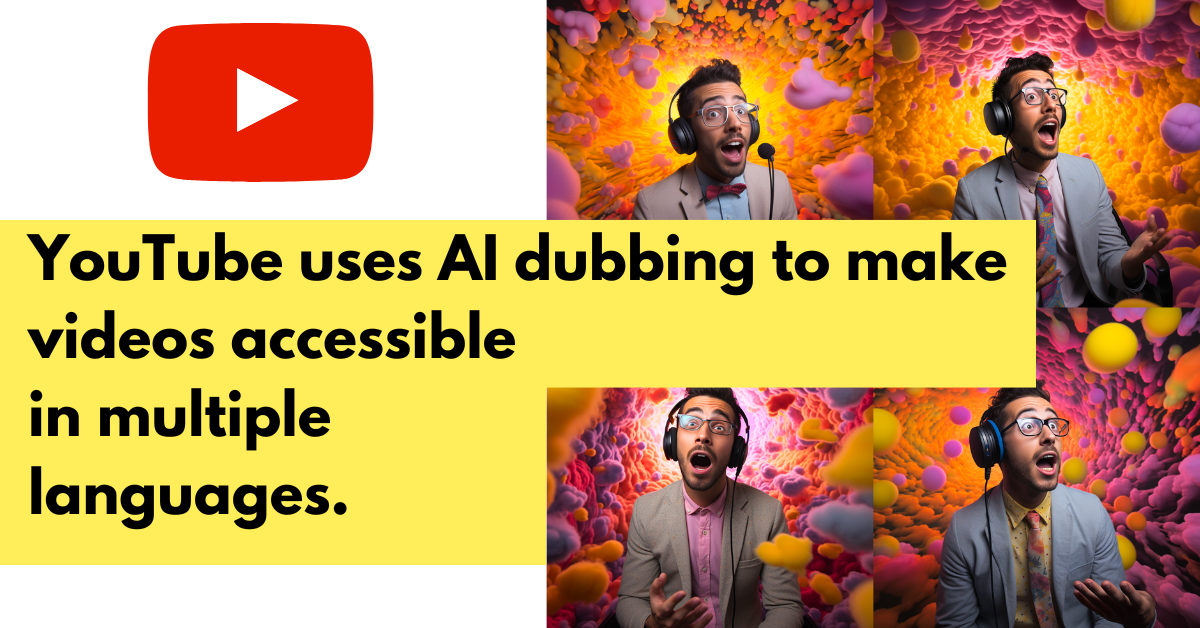YouTube integrates AI dubbing, paving the way for creators to effortlessly reach global audiences in multiple languages.
They’re doing this with the help of Aloud, a special service that uses AI, and is part of Google’s cool idea space called Area 120. They shared this awesome news on Thursday at VidCon, a big event for video fans.
Current Scenario
To understand how it is going to disrupt the dubbing industry. Let’s take a look at how things are right now in the YouTube dubbing industry:
| Highlight | Insight |
|---|---|
| Size of global dubbing industry | Over $10 billion |
| Size of YouTube dubbing industry | Over $1 billion |
| Cost to dub a YouTube video | Between $500 and $1,000 per language |
| Popular languages for dubbing | Hindi, Spanish, Arabic, and Portuguese |
| Popular content for dubbing | Gaming videos, music videos, and comedy sketches |
The YouTube dubbing industry is growing faster than the global dubbing industry. This is because more and more people are watching YouTube in different countries where English is not the main language. Also, YouTubers are making money from ads, deals with companies, and selling cool stuff with their brand on it.
What Did YouTube Do Before?
Earlier this year, YouTube made it possible for video makers to add different language audio tracks to their videos. This means that people from different countries can enjoy the same video in their own language. Until June 2023, video makers have changed the language of over 10,000 videos into more than 70 languages!



Before Aloud, if video makers wanted to change the language of their videos, they had to work with outside companies that help with dubbing. But, this took a lot of time and was pretty costly.
How Does Aloud Work?
Aloud is like magic for language changing! It writes down what’s being said in the video, then changes it to a different language and makes a new audio track in that language. Video makers can double-check and make changes to the written part before Aloud changes the audio.
Right now, YouTube is letting hundreds of video makers try out this tool. Aloud can change videos into English, Spanish, and Portuguese. They are planning to add more languages like Hindi and Bahasa Indonesian.
What’s Next?
Amjad Hanif, a big shot at YouTube, told people that they are trying to make the changed audio sound more like the original person talking, even matching the movement of their lips.
YouTube also said that they will use even smarter AI to make the voices sound real and match the emotions and lip movements better in the future.
So, get ready for a world where you can watch YouTube videos in many languages with the voices sounding like the real deal!
You might be interested in this
OpenAI’s ChatGPT App Expands Its Reach to 11 New Countries

